- Finance
-
Equipment
- Beverage
- Coffee
-
Cooking
- Shop all cooking
- Bratt pans
- Char grills
- Chicken rotisseries
- Combi ovens
- Contact grills
- Convection ovens
- Conveyor toasters
- Cooktops
- Cooktop oven combos
- Crepe and pancake makers
- Deck ovens
- Fryers and oil filters
- Griddles
- Kebab machines
- Microwaves
- Pasta cookers
- Pizza ovens
- Range ovens
- Rice cookers
- Salamander grills
- Sous vide
- Speed ovens
- Steamers
- Tandoor ovens
- Toaster grills
- Waffle makers
- Wok burners
- Other
- Dishwashers
- Food display
- Food preparation
- Stainless steel
- Laundry
- Point of sale
-
Refrigeration
- Shop all refrigeration
- Blast chillers
- Chest freezers
- Countertop fridges
- Display freezers
- Display fridges
- Gelato freezers
- Ice-cream machines
- Ice machines
- Pizza prep fridges
- Refrigerated drawers
- Sandwich prep fridges
- Slushie machines
- Under counter freezers
- Under counter fridges
- Upright freezers
- Upright fridges
- Other
- Restaurant furniture
- Shop all equipment
- Customers
- FAQs
- Resources
- About Us
Share
Best commercial cooktop: Buyer’s Guide
article
Inside this buyer's guide:
- Introduction
- Types of commercial cooktops - the best one for you
- Main things to consider when ordering a commercial cooktop
- Best commercial cooktops in Australia
- Used commercial cooktop - a worthwhile option?
- Warranty and insurance
- Top questions to ask before you order a commercial cooktop
- Commercial cooktop FAQs
- Terminology
- How to maintain your commercial cooktop
- How often should a commercial cooktop be serviced
- Save your cash, use ours!
The backbone of many restaurants’ kitchens is their commercial cooktop.
It’s the unsung hero that keeps service running smoothly, from the first chop of the morning to the last plate of the night.
To ensure your restaurant's success, you need a cooktop that’s reliable, consistent, and versatile.
Different types of cuisine call for different types of cooktops.
For example, gas cooktops are essential for Chinese cuisine, while Italian dishes are best prepared on an induction cooktop.
But that's just the start.
Your cooktop must also be adaptable enough to handle any challenge, whether it's frying, boiling, sautéing, or blanching.
Think of it as your trusty sidekick, always there to support you through thick and thin — or should we say, rare and well done?
There are lots of cooktops to choose from; this guide is designed to help you select the right one for your situation.
Questions to ask yourself
To choose the best cooktop for your needs, you must ask yourself two critical questions:
What will I be cooking?
To determine the best option for your restaurant, consider your menu and the type of food you need to cook.
For instance, if you own a high-volume establishment specialising in Chinese cuisine, your menu will require lots of stir-frying, steaming, roasting and braising.
How much will I be cooking?
You’ll also need to consider the amount of food you'll be serving daily.
If, for argument’s sake, you’ll be serving 100–150 customers a day, you’ll probably need a larger gas cooktop with six burners to meet demand without compromising on quality.
Types of commercial cooktops
There are three types of cooktops, which are distinguished by their heat sources.
Commercial gas cooktop
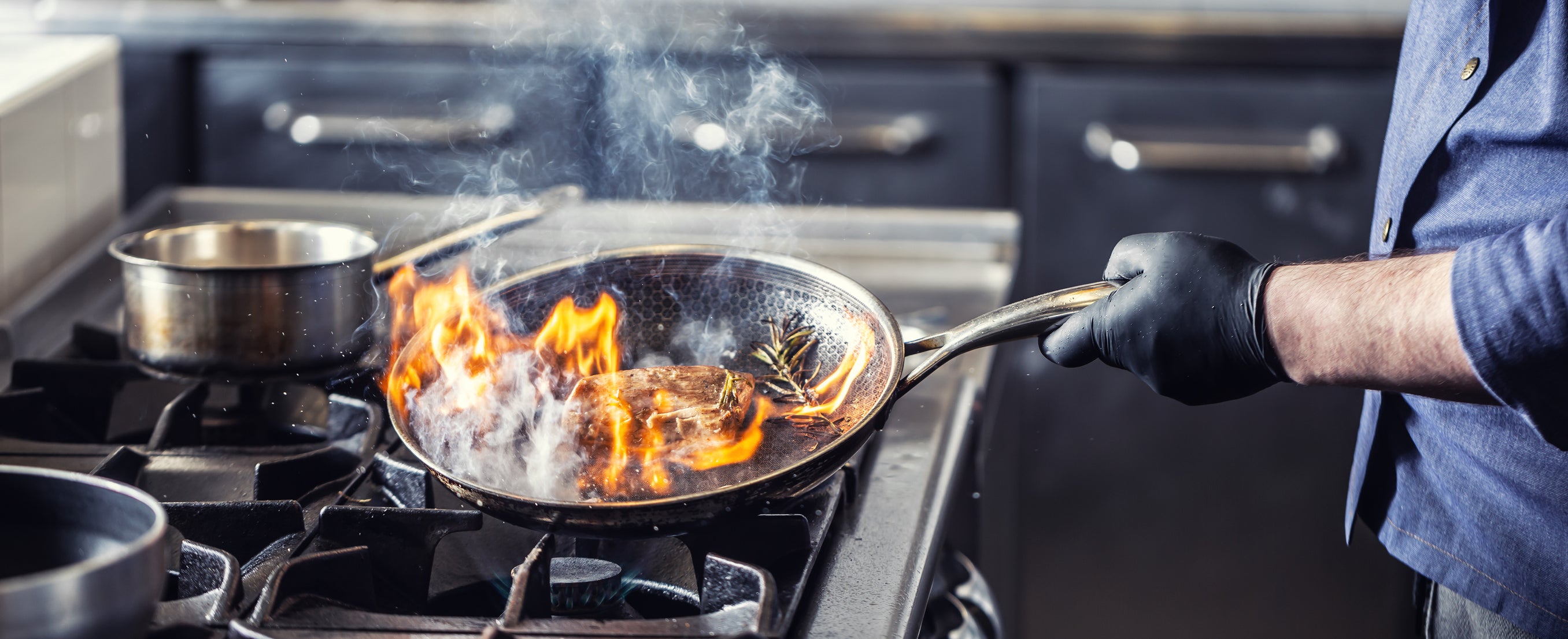
This cooktop comprises burners and a base that runs on gas.
Gas cooktops are ideal for frying, grilling and boiling because they rapidly deliver high temperatures that can be easily regulated with knobs.
They are available in 2 burner, 3 burner, and 4 burner configurations.
Pros:
- Instant heat control — from high to low
- More adaptable for grilling, searing and simmering
- Temperature control is much easier
- Works well with various types of cookware
Cons:
- Ventilation issues — which can leave a greasy residue
- Not very easy to clean
- The pilot light can burn out
- Sometimes the burner won’t light (i.e. it can be challenging to turn it on)
Commercial induction cooktop

This cooktop uses magnetic induction to heat pots and pans (as opposed to a gas or electric element transferring heat from the burner to the cookware).
The cooktop features a smooth glass surface, on which the cookware is placed.
The magnetic field is generated by an induction coil and generator located beneath the glass, which heats the cookware.
Pros:
- Temperature control is more precise than gas cooktops
- It has the highest energy efficiency
- Keeps the cooking surface relatively cool
Cons:
- It is more expensive
- It requires specific types of cookware, namely cast iron, enamelled cast iron and stainless steel. Ceramic, copper and aluminium pots and pans are unusable
- Its rapid heating time makes it easy to overcook food
- It can scratch more easily
Commercial electric cooktop
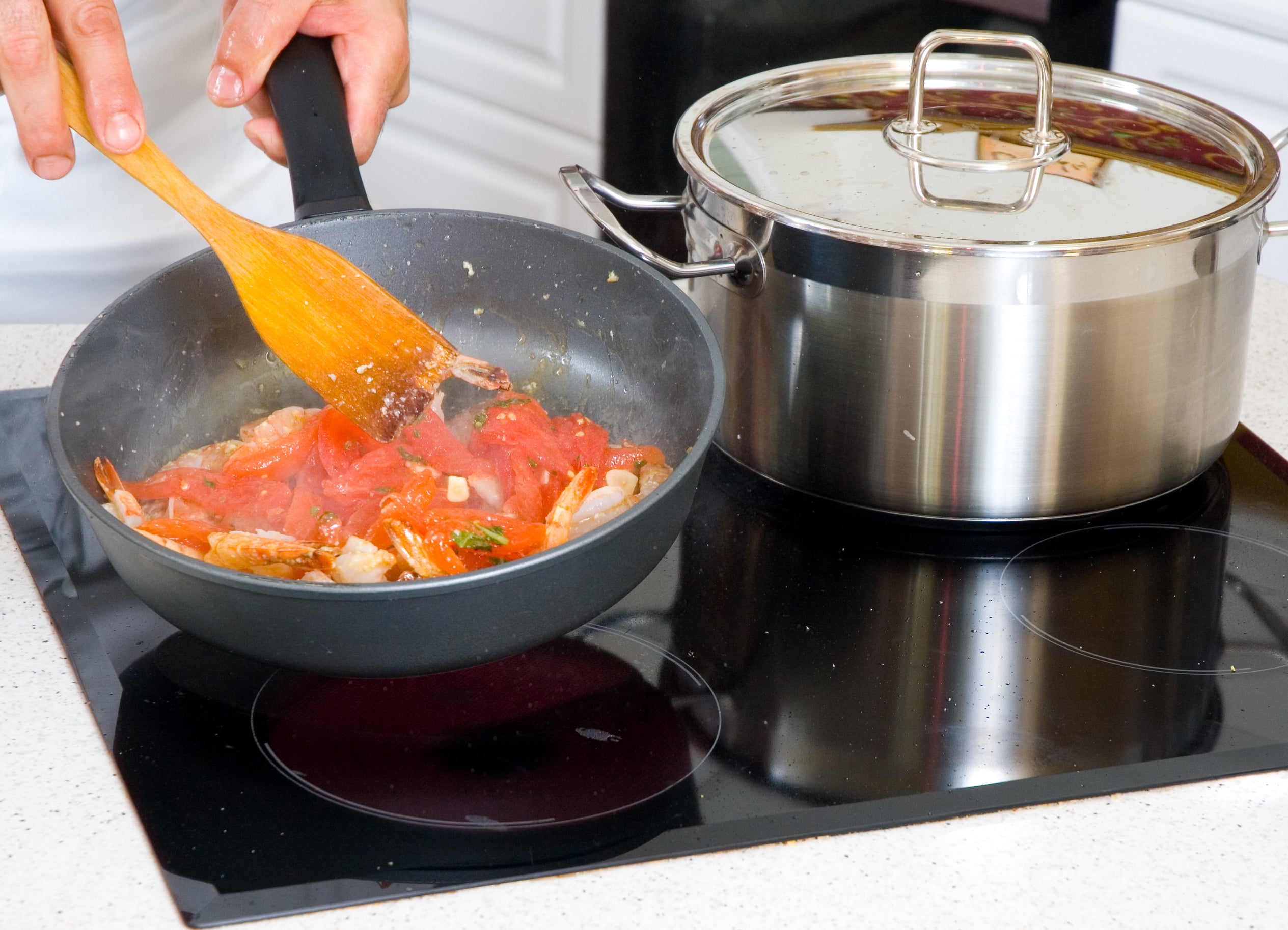
Electric cooktops are a widely used and cost-effective option for commercial kitchens.
They come in various shapes and sizes and heat up quickly.
However, they may be less efficient and precise compared to gas or induction models.
Technological advances have improved electric cooktops’ efficiency.
The latest models provide more rapid and uniform heating with improved heat distribution from tightly wrapped heating components.
Pros:
- Cleaning is a breeze, thanks to their smooth surface
- Easy to install - they only require an electrical connection to function
Cons:
- Susceptible to scratches
- Least energy efficient compared to its counterparts
- Only specific types of pots and pans can be used. Avoid using copper-bottomed and aluminium pots, as they can damage the cooktop surface irreparably
Main things to consider when ordering a commercial cooktop
Here are the factors to take into account when ordering a commercial cooktop for your establishment.
Type of cooktop
The following table summarises the attributes of the different types of cooktops:
|
Features |
Gas |
Induction |
Electric |
|
Heat-up time |
|
|
|
|
Cooking quality |
|
|
|
|
Installation |
|
|
|
|
Safety |
|
|
|
Configuration
The following are the most popular commercial cooktop setups:
Charbroiler
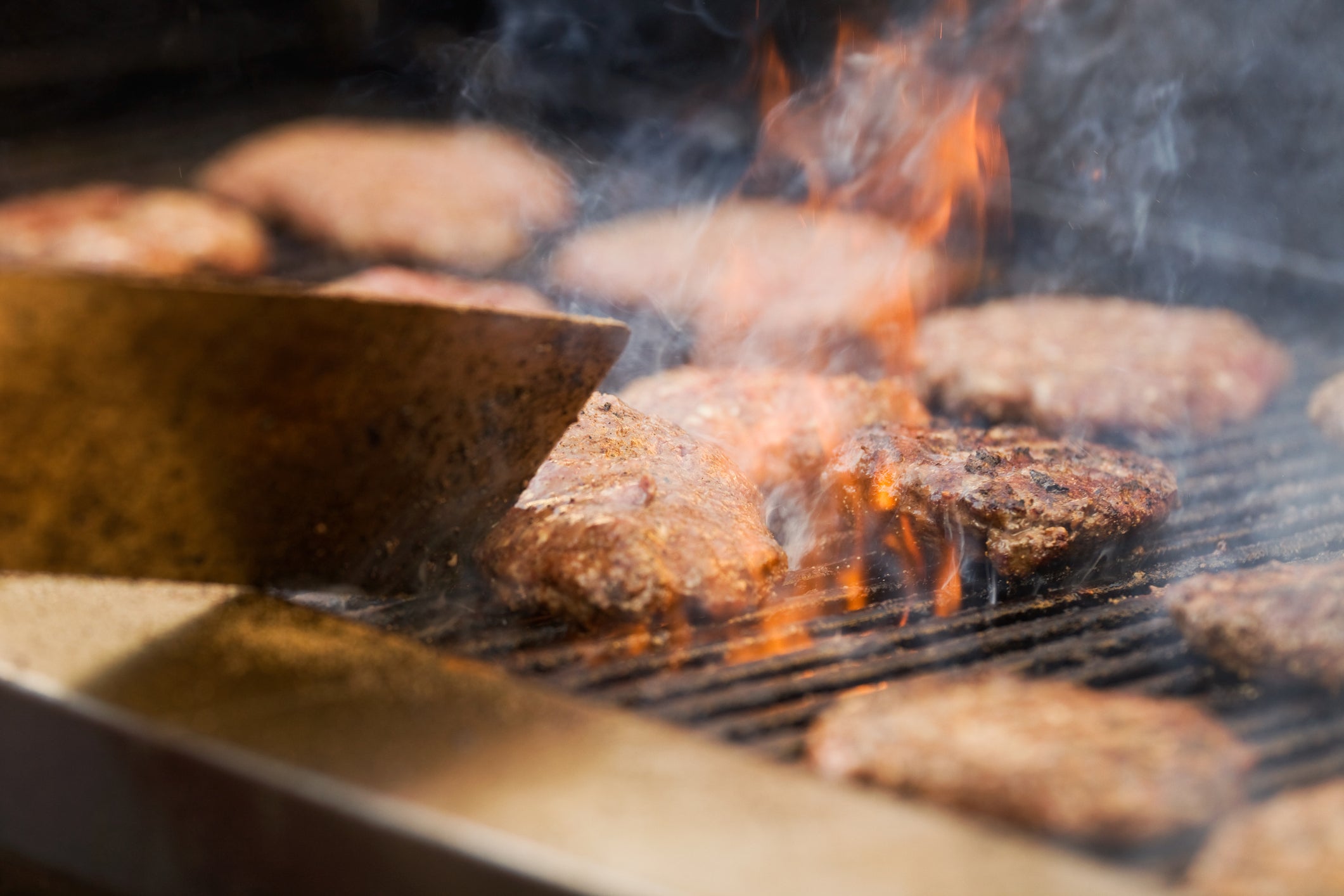
A charbroiler, also known as a chargrill, has cast-iron or stainless-steel grates on which food is cooked at temperatures of 288° C or more.
Radiant heating components are used to heat the majority of charbroilers.
These heaters are powered by gas or electricity.
Combination surface
Many commercial cooktops include combination surfaces, — two or more configurations that accommodate different cooking methods in a single range.
Since open burners are useful in commercial kitchens, most combos feature at least one.
Open burners with a griddle, open burners with a griddle and a broiler, and open burners with a hot top are all popular combinations.
French top
The French top is inspired by traditional French cuisine, which requires chefs to simmer soups and sauces over a low fire while other dishes cook.
The central ring is used for high-heat cooking, such as heating soups and stews.
It can also be removed to create an open flame for high-heat stir-frying with a wok.
Griddle top
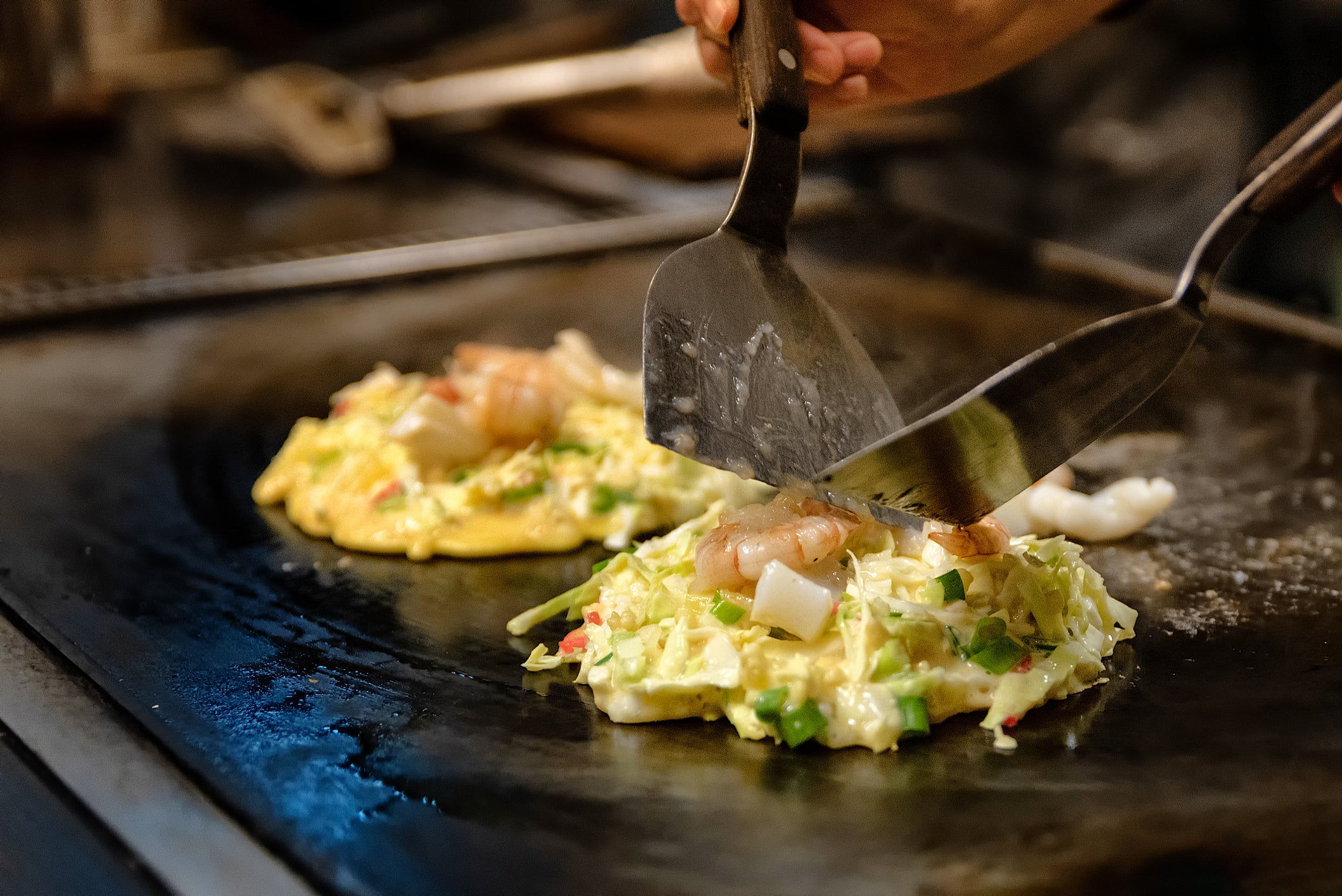
A griddle top is incredibly versatile.
It has a large, flat, heated surface and can cook everything from eggs, pancakes, hamburger patties, bacon, sandwiches and steaks to more delicate dishes such as seafood.
Buying a cooktop with an integrated griddle gives you the most bang for your buck.
Hot top
A hot top is a flat cooking plate heated using atmospheric gas burners.
Premium makes and models can reach temperatures of 260° C to 538° C.
Although a hot top lacks the concentrated heating zones of open burners, several types allow you to build a temperature gradient from front to rear.
You may use this to, for example, slide a large pot of stew from the hotter front portion to the cooler back section, where it can continue to simmer until done.
Open burner
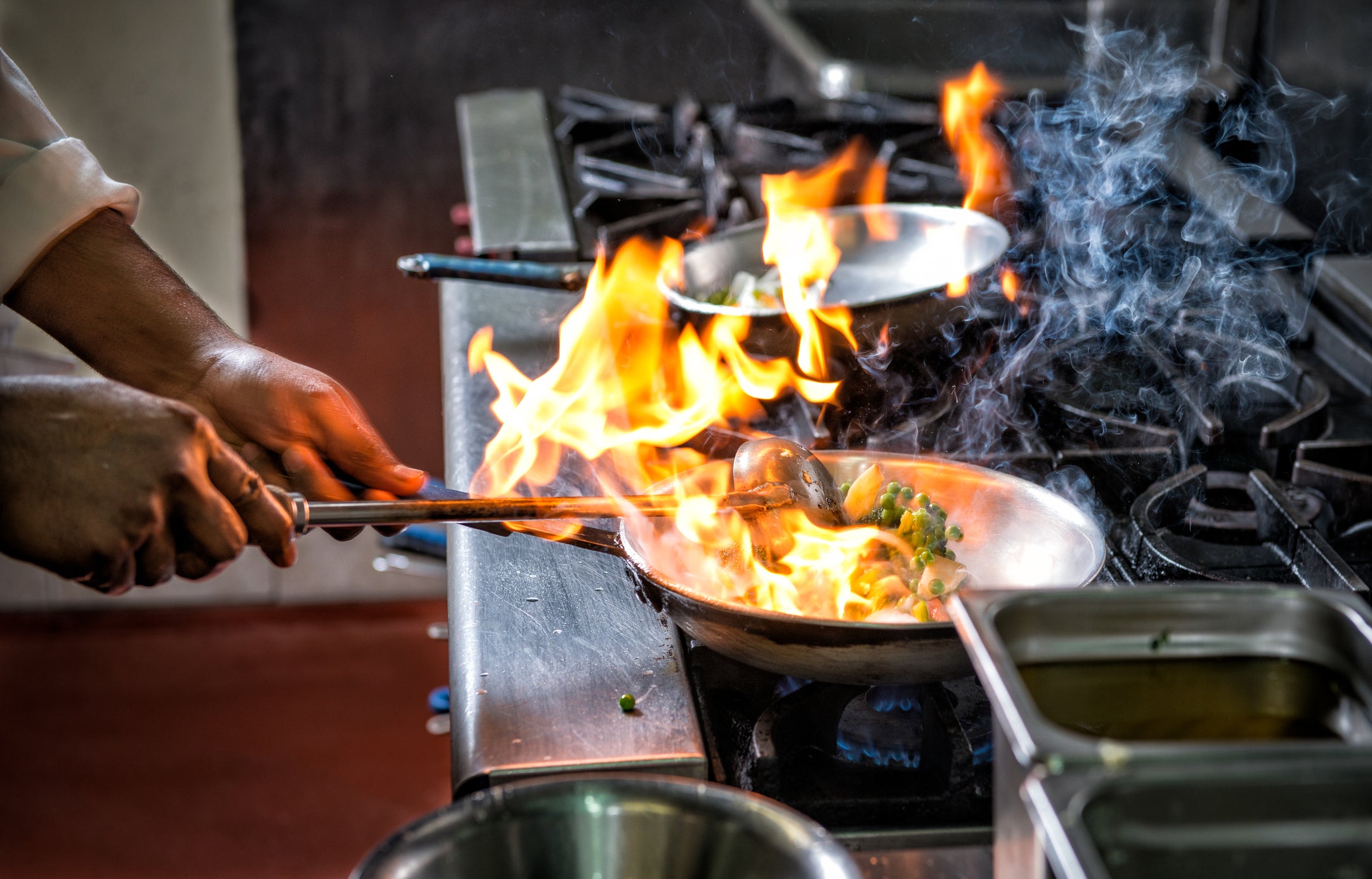
The open burner is the most popular configuration as it’s the most adaptable.
Powered by gas, an open burner generates an open flame that concentrates heat on pots and pans of food.
It has a burner head that emits the flame and a burner cap that covers the head.
It usually has a drip tray to catch any food spills.
Ignition
The two most common types of ignition in commercial cooktops are:
Pilot ignition
If your cooktop features a pilot-ignition mechanism, it will always maintain a small pilot flame.
This maintains the thermocouple's temperature and keeps the gas valve open, allowing gas to flow to the burner and ignite flames when you crank the burner knob.
Since a pilot ignition system consumes gas to keep the pilot light burning, it is less energy-efficient than a spark-ignition system.
Electronic/Spark ignition
Electronic ignition generates a spark using an electric current.
When you turn on an electronic-ignition range, you’ll hear a loud clicking sound to signal that the spark has been triggered.
This spark makes contact with the gas and ignites it, resulting in an open flame.
Since electronic ignition eliminates the need to maintain a constant supply of gas to a pilot light, it is more energy-efficient than pilot-light ignition.
BTU
BTU is the abbreviation for British Thermal Unit, which is a unit of heat output.
The higher the BTU rating, in general, the faster the cooktop’s surface will heat up.
If you do a lot of cooking that demands high heat, such as searing meat, you should get a cooktop with high-BTU burners.
However, you must also consider how you will use the other burners.
If you'll mostly be simmering or boiling at low temperatures, you won't need to worry about the BTU rating as much.
Installation
To ensure safe and effective installation of a commercial cooktop, you should be mindful of several factors, including:
Electrical connection
The cooktop must be connected to a dependable electrical source.
This involves running electrical wiring to the cooktop, connecting it to a circuit breaker, and installing a separate circuit for the cooktop.
Gas connection
If you’re installing a gas-powered cooktop, it needs to be connected to a gas line.
This involves running a gas line to the cooktop and installing a shutoff valve.
Ventilation
Most commercial cooktops need adequate ventilation to ensure proper operation and reduce the risk of fire.
Install an exhaust hood above the cooktop, connect the hood to the ductwork, and ensure that the hood and ductwork comply with Australian ventilation codes and regulations.
Placement
The cooktop should be placed in an area that is easily accessible to your staff, allows for easy movement around the kitchen, and is near electrical and plumbing connections.
Furthermore, the cooktop’s location must comply with Australian safety codes and regulations, including distances from other kitchen equipment.
Regular cleaning and maintenance is important to keep the cooktop in good working order and to avoid any breakdowns.
Budget
When ordering a commercial cooktop, it's crucial to consider not only the equipment cost, but also any incidental expenses that may arise.
Commercial cooktops range in price from $2,000 to $10,000 or more, depending on the make and model. Here are some associated costs to be aware of:
Accessories
Some commercial cooktops may require additional accessories such as grates, knobs, and control panels.
The cost of these accessories can range from $50 to $200 or more, depending on the make and model.
Electricity costs
The electricity consumption of a commercial cooktop varies according to its size, number of burners, and how frequently it’s used.
Commercial cooktop electricity bills generally range from $300 to $600 per year.
Incidental costs
Delivery and installation of a cooktop generally ranges between $200 to $800, depending on the distance it has to be transported and the complexity of the installation.
Maintenance costs
Regular cleaning and maintenance is important to keep the cooktop in good working order and to avoid any breakdowns.
Cleaning supplies, replacement parts, and professional service calls will generally set you back $300 to $500 per year.
By factoring in all these costs, you can make an informed decision and stay within your budget.
Safety features
Here are some important safety features to look for:
Automatic shut-off
This feature turns off the cooktop if it overheats or is left unattended for an extended period of time, thereby preventing kitchen fires.
Flame-failure device
This device automatically turns off the gas supply if the flame is accidentally extinguished, reducing the likelihood of unburned gas leaking into the room.
Anti-tip brackets
These brackets are designed to keep the cooktop from tipping over if it’s bumped or knocked, helping prevent accidents and injuries.
Cool-touch handles
These handles prevent accidental burns and scalds.
Splash guard
The guard prevents liquids, fats and oils from splashing onto the floor, reducing the risk of slips and falls.
Energy efficiency
Energy-efficient cooktops are good not only for your wallet but also the environment.
Here are some key factors to consider:
Energy-star rating
Pick a cooktop with a high rating from the Australian Government's Energy-Star program.
Digital controls
Cooktops with digital controls are usually more energy-efficient than ones with manual controls.
Temperatures can be adjusted more precisely, reducing energy waste.
Burner design
Burners designed to distribute heat evenly and reduce hot spots are more energy-efficient.
Insulation
Well-insulated cooktops reduce heat loss and increase energy efficiency.
Power management
Power management features such as automatic shut-off can help reduce energy consumption.
Ease of use
To evaluate a cooktop’s ease of use, consider the following:
Burner placement and size
The placement and size of the burners should be optimised for maximum efficiency and ease of use.
A well-designed cooktop should also provide ample space between burners for pots and pans.
User-friendly controls
The controls should be easy to operate, intuitive, and labelled clearly.
This helps minimise errors and ensures the cooktop is used correctly and safely.
Ease of cleaning
When evaluating how easy a cooktop will be to clean, consider the following:
Materials
Cooktops made of materials that are easy to clean, such as stainless steel, are ideal for commercial kitchens.
They should also be rust-resistant and able to withstand harsh cleaning products.
Removable parts
Cooktops with removable parts, such as grates, burners, and drip pans, are easier to clean and maintain.
They also allow for more thorough cleaning and reduce the risk of cross-contamination.
Spill protection
Cooktops with built-in spill protection, such as raised edges or splash guards, aid in containing spills and prevent them from spreading to other areas of the kitchen.
Best commercial cooktops in Australia
LUUS

LUUS is an Australian commercial kitchen equipment manufacturer founded in 2001 by Luke Ursino.
The brand is known for its high-quality and durable cooking equipment, including commercial gas ranges, deep fryers, griddles, and more.
LUUS prides itself on its commitment to innovation and excellence in design, making it a trusted choice for professional chefs and businesses in the foodservice industry.
LUUS CS600MM Cooktop
This cooktop is a top-of-the-line commercial-grade cooking appliance, built for professional kitchens.
Its features include heavy-duty cast-iron trivets, powerful burners, and precise temperature control, making it the perfect choice for high-volume cooking.
Its durable stainless-steel construction also guarantees longevity and easy maintenance.
Key features:
Burners
4 x 28 nickel-plated ARC burners
Cleaning
Dishwasher-safe spillage bowls
Mount
Benchtop or on stand with under-shelf
Safety
Flame-failure device
Easy to clean
Yes
Variable flame-control valve
Yes
LUUS CS 900MM Cooktop
This cooktop is a premium-quality, commercial-grade appliance.
It features powerful open burners, optional griddle or chargrill configurations, and a robust stainless-steel construction that ensures durability and easy maintenance.
Its size and versatility make it an ideal choice for high-volume cooking.
Key features:
Burners
6 x 28Mj/h nickel-plated ARC burners
Cleaning
Dishwasher-safe spillage bowls
Mount
Benchtop or on stand with under-shelf
Combinations
Burner, chargrill and hotplate
Safety
Flame-failure device
Easy to clean
Yes
B+S
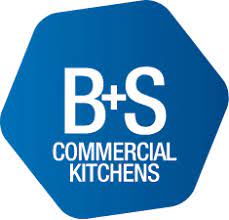
B+S is a well-known kitchen-equipment brand established in 1983 by Peter Bowles and John Shepherd.
It’s renowned for producing high-quality commercial-grade kitchen equipment, including ranges, cooktops, fryers, ovens, and grills.
Its products are designed with durability and performance in mind, making them a top choice for professional kitchens.
B+S Black Series: BT-SB2-GRP3-BM
When it comes to high-performance cooktops, the B+S BLACK SERIES BT-SB2-GRP3-BM is a top contender.
Its open burners and grill plate make it versatile, while its bench-mounted design saves space in the kitchen.
Made from durable stainless steel, this appliance is easy to clean and built to withstand the rigours of a busy kitchen.
Key features:
Burners
31Mj/h black-enamelled Italian-made burner (BT) and 22Mj/h aluminised tube burner
Burner assembly
Removable heavy-duty two-piece burner
Trivets construction
Heavy-duty Italian-made vitreous enamelled trivets provide sturdy support for pots and pans.
Combinations
Burners and grill plate
Grill-plate construction
Heavy-duty mild steel (12mm thick)
Easy to clean
Yes — spillage tray is removable
Gas valve
Multi-setting gas valve as standard
Safety
Flame-failure fitted as standard
B+S Black Series combination cooktop: BT-SB2-CBR6-BM
With two open burners and a high-performance charbroiler, the B+S Black BT-SB2-CBR6BM combination cooktop is versatile and efficient.
Made from high-quality materials, it’s durable and easy to clean, making it an excellent choice for busy chefs who demand the best.
Key features:
Burners
31Mj/h black-enamelled Italian-made burner (BT) and 34Mj/h aluminised tube burner
Burner assembly
Removable heavy-duty two-piece burner
Trivets construction
Heavy-duty Italian-made vitreous enamelled trivets provide sturdy support for pots and pans.
Combinations
Open gas burners and mild-steel griddle plate
Grates and hoods construction
Heavy-duty cast-iron J-grates and radiant hoods
Grill-plate construction
Heavy-duty mild-steel (12mm thick)
Easy to clean
Yes — removable spillage tray
Gas valve
Multi-setting gas valve as standard
Safety
Flame-failure fitted as standard
Goldstein

Founded by Louis Goldstein, Goldstein is an Australian brand that has been making commercial kitchen equipment since 1911.
It’s known for manufacturing high-quality and durable cooking appliances for professional kitchens.
Its range of products includes commercial ovens, cooktops, griddles, fryers, and it caters to various industries, including hospitality, healthcare, and education.
Goldstein Cooktop 4 Burner Gas PFB24
This cooktop is a high-performance appliance with a durable, heavy-duty construction.
The heat of its four individual burners can be managed precisely, enabling efficient cooking.
The appliance’s sleek design makes it easy to clean.
Key features:
Burners
28Mj/h open gas burners.
Trivets construction
Heavy-duty cast-iron trivets provide sturdy support for pots and pans.
Combination
Open burners with griddle option (on left side).
Body construction
Heavy-duty fully welded steel body for rigidity and durability.
Construction
Stainless steel for easy cleaning.
Spill zones and drip trays
Included for added convenience.
Mounting options
Can be mounted on a stand or bench.
Pilots
Pilot light standard for maximum energy efficiency.
Safety
Pilot-flame failure on open burners for added safety.
Goldstein Radiant Chargrill Cooktop Gas 610mm RBA24L
This cooktop is equipped with two independently controlled burners and a generous cooking surface to handle multiple orders at once.
With its sleek design and superior functionality, this 610mm-wide gas chargrill is a must-have for any professional kitchen looking to impress their customers.
Key features:
Burners
Two independently controlled burners
Width
610mm-wide gas chargrill
Grates construction
Heavy-duty cast-iron reversible grates
Body construction
Heavy-duty fully welded steel body
Sides construction
Stainless steel
Easy to clean
Yes — comes with a spill zone and drip tray
Pilot light
Standard
Configuration
Gas burners and griddle plate option
Mounting options
Flexible — stand or bench mount
Trueheat
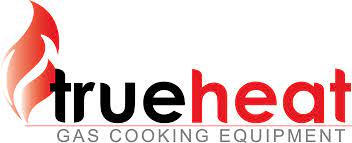
Established in 1998, Trueheat is an Australian brand known for its reliable and affordable commercial cooktops, ovens and fryers.
Its founder, Yuen Keat Lee, has a background in commercial kitchen equipment and has built the brand on quality and value for money.
Trueheat's equipment is well-regarded for being sturdy, efficient and easy to use, making it a popular choice for many commercial kitchens.
TRUEHEAT RC SERIES 600MM TOP W 4 BURNERS RCT6-4-NG
This versatile cooktop is made for busy Australian bars, cafes, and restaurants.
It features four powerful 24Mj/hr open burners, each with individual standing pilots, and 100% flame-failure controls.
Its durable cast-iron burners and trivets are flush for easy movement of heavy pots.
Key features:
Burners
4 x 24Mj/h open burners with individual standing pilots
Trivets
Durable, lightweight, and flush cast-iron trivets
Combination
Burner/griddle
Optional stand
Comes with a shelf suitable for all cooktops and barbecues
Installation
Suitable for countertops and stands
TRUEHEAT RC SERIES 900MM TOP W FULL GRIDDLE PLATE RCT9-9G-NG
This cooktop’s 16mm-thick steel griddle and durable cast-iron H burner ensure even heat distribution and consistent cooking every time.
And with its modular design, it can be easily mixed and matched with other commercial appliances to suit the specific needs of your cafe, bar, or restaurant.
Key features:
Burners
16Mj/h open burners with powerful cast-iron H burner
Combination
Burner/full griddle plate
Optional stand
Comes with a shelf suitable for all cooktops and barbecues
Installation
Suitable for countertops and stands
American Range

Established in 1974, American Range makes high-quality commercial cooking equipment, including cooktops, ovens, fryers, and griddles.
Founded by Chef–engineer Bun Lai, it has been providing innovative and durable equipment to professional kitchens for over 45 years.
ARDCT-305Vitesse Series 30-inch Drop-In Cooktop Range with 5 burners
This powerful and versatile cooktop features five sealed burners, including one 21k BTU burner with simmer, and four 13k BTU burners.
With its bead-blasted, stainless-steel burner area and sealed burners, it’s easy to keep clean.
The cooktop is available in natural gas and propane (LP) fuel types.
Key features:
Griddle plates
Mirrored chrome finish available in flat and grooved surfaces.
Backsplash options
One-inch standard fabricated island back, one-inch welded island back, four-inch stub back, 20-inch-high back with shelf.
Easy to clean
Yes — removable griddle plate, griddle cover, and grill cover.
Additional features
Wok adapter for greater cooking flexibility, bright-red and burgundy knobs for a stylish finish.
Cuisine Series Cooktop with 6 Burners and Char Broiler ARSCT-486GD
This versatile and high-performing cooktop comes with six sealed gas burners and an 11-inch charbroiler, allowing you to cook a variety of dishes simultaneously.
This model’s sleek design and durable construction makes it an excellent choice for busy kitchens.
Key features:
Griddle plates
Mirrored chrome finish available in flat and grooved surfaces.
Combination
Gas burners/charbroiler
Backsplash options
One-inch standard fabricated island back, one-inch welded island back, four-inch stub back, 20-inch-high back with shelf.
Easy to clean
Yes — removable griddle plate, griddle cover, and grill cover
Additional features
Wok adapter for greater cooking flexibility, bright-red and burgundy knobs for a stylish finish.
Used commercial cooktops — worth considering?
Spending thousands of dollars on new commercial kitchen equipment can put a strain on your budget and cash flow.
If you’d prefer not to invest a lot of money in new cooktop, a cheaper, pre-owned appliance might be the solution you’re looking for.
SilverChef’s range of ‘Certified Used’ equipment is mostly ex-rental equipment sourced from businesses we know and trust.
The equipment is typically less than two-and-a-half years old, has been fully refurbished by us, and is backed by a three-month parts-and-labour warranty.
You can either buy or finance the ‘Certified Used’ (and clearance) equipment on our website.
We’re one of the few financiers, if not the only one, in Australia that funds second-hand commercial kitchen equipment.
Read more about ‘Certified Used’ equipment
Warranty and insurance
Most equipment manufacturers provide warranties ranging from one to five years, depending on the type of equipment.
If the equipment develops a covered fault within that time, the manufacturer is obliged to repair or replace the equipment or give you a full refund.
Carefully study the warranty to understand exactly what is and isn't covered.
SilverChef offers a three-month parts-and-labour warranty on all our ‘Certified Used’ and clearance equipment.
Business insurance covers loss or damage to your commercial kitchen equipment and other property.
This cover typically includes fire, accident, and theft. Some insurers also offer equipment-breakdown cover.
Contact your insurer to confirm whether the equipment you’re getting is automatically covered by your policy or will need to be added to it.
If your insurer doesn’t provide flood cover as standard, you may wish to consider requesting it.
Top questions to ask before you buy a commercial cooktop
Questions to ask your equipment dealer
- How much does a commercial cooktop cost?
- Which type of commercial cooktop would be best for my business?
- How easy is it to clean a commercial cooktop?
- Are ceramic cooktops safe?
- Are the spare parts easily available?
- How quickly will parts need to be replaced?
- What does the warranty cover?
- What is the optimal wattage of a commercial cooktop?
- What safety features does the cooktop have?
Questions to ask your industry peers
- Which make and model of commercial cooktop are you using?
- Why did you choose that make and model?
- Did you get a used commercial cooktop or a brand-new one?
- How do you rate your experience with the cooktop and why?
- Do your kitchen staff find the cooktop easy to use and clean?
- How much does the cooktop cost to maintain and repair?
- What has the after-sales support been like?
- Would you recommend your cooktop to others?
These cooktops are designed for high-heat cooking, including searing and stir-frying.
Commercial cooktop FAQs
What is the difference between a cooktop and a range?
A cooktop is a standalone appliance that consists of burners or heating elements that are mounted onto a countertop or installed on a kitchen island.
It’s usually used in combination with a separate oven installed in a wall or under the countertop.
A range, on the other hand, includes both a cooktop and an oven in a single unit.
How many BTUs should a commercial cooktop have?
Ideally, a commercial cooktop should deliver 12,000–25,000 BTUs.
These cooktops are designed for high-heat cooking, including searing and stir-frying.
You must ensure your commercial kitchen has adequate ventilation for these powerful appliances.
What is the lifespan of a professional cooktop?
Electric and gas cooktops can last 10 years or more, subject to them being well maintained.
What are some safety tips while handling commercial gas cooktops?
- Use a carbon monoxide monitor (gas cooktops).
- Ensure your cooktop is cleaned and maintained regularly.
- If you smell gas, turn off the cooktop until the smell has dissipated.
- Make sure the burners are turned on only for the duration of cooking.
- Use heat-proof utensils when cooking.
Commercial cooktop terminology
Burner
The component of the gas cooktop that heats your cookware.
Burner cover
A gas cooktop accessory that shields your burners from sauce spills and smears while also giving them a new, clean appearance.
BTU (British thermal unit)
The BTU is a measure of heat used to indicate the heat given off by your gas range or cooktop.
Control knobs
The knobs used to control the heat of a cooktop’s burners.
Drip pan
This pan, which sits underneath the cooktop’s burners, catches any dribbles or spills, making the appliance easier to clean.
Electric cooktop
A type of cooktop that cooks food using heated metal coils underneath a flat ceramic–glass surface.
Flame-failure safety
This feature automatically turns off the gas supply if the flame goes out, thereby preventing gas leaks and potential fire hazards.
Grates
Components of the cooktop that sit above the burners and help distribute heat evenly below the cookware.
Megajoules per hour (MJ/h)
The energy produced by a burner per hour, with one MJ equalling one million joules.
A higher MJ/h rating means the burner can generate more heat and cook food faster and more efficiently.
Open burner
A type of burner that doesn’t have an airtight seal around the burner area, allowing for more oxygen in the flame and higher cooking temperatures.
They provide more direct flame and heat than a sealed burner but are more difficult to clean.
Pilot light
A small flame that burns continuously in gas appliances and is used to ignite the gas for the main burner.
Sealed burner
A type of burner with an airtight seal surrounding the gas outlets, which stops food and liquid from falling into the ports.
They provide less direct flame and heat than an open burner, however they’re easier to clean.
How to maintain your commercial cooktop
Maintaining your commercial cooktop is essential to ensure its longevity and efficiency. Here are some steps to keep your cooktop in top shape:
Burner alignment
Properly align the cooktop’s burners to maximise heat output and prevent heat loss.
Burner care
Clean burners after each use, removing any food particles or grease.
Disassemble and wash burners with soap and water as needed.
Drip-pan maintenance
Clean drip pans to prevent food and grease build-up.
Use soap and water.
Electrical connection check
Ensure electrical connections are secure and free from damage.
Call an electrician for repairs.
Gas-line safety
Check gas lines for leaks or damage and have a professional repair them if necessary.
Grate cleaning
Clean grates with a soft cloth and soap and water. Avoid abrasive materials.
Knob and control cleaning
Clean knobs and controls with a mild detergent and soft cloth.
Keep liquids away from the control panel.
Regular inspection
Periodically inspect the cooktop for signs of wear and tear and have a professional repair any issues promptly.
Surface cleaning
Use a cooktop cleaner and polish to maintain the surface and remove stubborn stains.
Avoid abrasive materials.
How often should the commercial cooktop be serviced?
It’s recommended commercial cooktops be checked and serviced at least once a year to be sure they’re safe and working efficiently.
Keep your cash, use ours!
Hospitality equipment can be expensive and paying for it outright can put pressure on your business’s cash flow.
Our finance solutions allow you to get the equipment you want now and to pay for it in small, regular amounts out of the revenue it generates for you.
Rent–Try–Buy® not only helps you maintain your cash flow, it also gives you unrivalled flexibility to adapt your equipment to the changing needs of your business.
You can upgrade or buy the equipment at any time or, after 12 months, return or continue renting it.
If you decide to buy the equipment, we’ll give you back 75% of the net rent you paid in the first year and 25% of any rental payments thereafter — to put toward the purchase price.
Read more about Rent–Try–Buy
